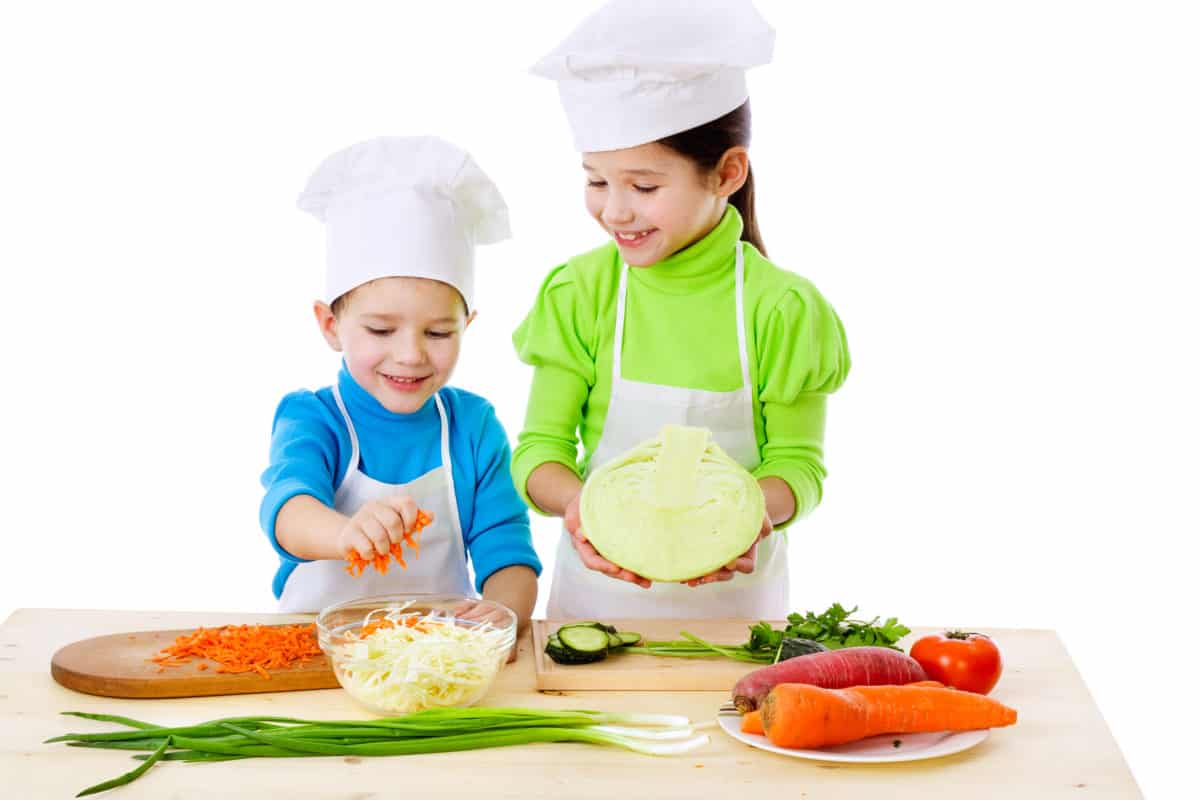I teach kids in a program called Cook!, near San Francisco, California, that offers culinary arts classes for 8- to 18-year-olds. To some extent we ride on the coat tails of the culinary movement driven by TV chefs. In fact, when we introduce our kitchen we always mention that we were the home kitchen for the first season of Top Chef. But truly, it is one of the least exciting things we have to brag about. My pinnacle moments have much more to do with the deeply rewarding achievements of our incredible but ordinary kids.
“Mom, I love artichokes now!” This was an exclamation I overheard after our very first day of camp ever and it has never left me. I have watched kids grow into adults who I see at the grocery stores, filling their baskets with fresh ingredients. They feel challenged by the kitchen in a way that (they tell me) builds confidence. One of my long time students just wrote his first cookbook. Another stopped me on the street to tell me how important his time in our camp was to him. I have watched the most timid child wield a torch, the most finicky child eat a plate of cooked vegetables that he made, and the shyest child break out of her shell and present her creations to an audience.
This is real reward.
Beyond achievements, of course, are the even deeper rewards of bonding, the string of moments shared, elbow-to-elbow, peeling potatoes, whipping up egg whites, tending to a pan of sizzling meat, practicing knife skills, or kneading dough.
I’ve found, with my own young children, that there is almost no better time spent than when we are working together on a project. We set ourselves to the task of snapping beans, for example, and spend ten minutes chatting, singing songs, and making up jokes. Sometimes we just need to have our hands busy so that our minds can open up.
Have you ever tried to cook a meal while your children raced around the house, begging in one way or another for your attention? It’s a wonder we can cook at all. The best solution is to get them involved. Buy a few extra ingredients and let your kids be in charge of a dish. Who cares if it comes out messy? Sacrifice a handful of flour and water and teach them how to knead, then let them shape their dough, coat it in seeds and bake it. Let them go to the garden and pick herbs, or help choose produce when you’re shopping. The trick is to make the experience of cooking with fresh ingredients and eating a variety of foods so common that we take them for granted.
So how do we introduce our students to unfamiliar foods? The answer is REALLY simple. We buy fresh, seasonal ingredients – in other words, what we know tastes good. We choose methods of cooking these ingredients that highlight their flavor. And – this is the most important part – we have the students prepare the food from start to finish.
For example, artichokes are thorny, impenetrable-looking flowers that come from a wild and unruly bush. To prepare the artichokes you have to first trim off all the spikes from the ends of the leaves. Sometimes you get poked in the process! You then cut the tops off, trim the bottoms a little, and then braise them in water with garlic, balsamic vinegar, olive oil, salt and pepper. We cooked these up on the first day of one of our classes and all the kids who worked on them tried them, but not every kid in class was feeling brave. The next day we stripped all the leaves off the uneaten artichokes. I gathered a small group of kids and had them mince garlic. We melted butter in a pan, cooked the garlic in the butter until it just started to show signs of browning, and then tossed in the artichoke leaves and cooked this all together until the leaves were hot and starting to brown. We poured them into a bowl, sprinkled them with salt and lemon and served them. They were gone faster than popcorn.
When cooking a dish we will guess at what might work, relying on our knowledge of tastes and chemistry, we will taste things we don’t know, and we will throw caution to the wind and put things together without knowing if it will fail or if we may create something extraordinary. I remember the first time I had watermelon and tomatoes together in a salad. I thought, “I would never have put those two things together. And it’s delicious!” Herbs are unique in that they pack a ton of flavor into a very small mass. A single leaf of thyme, which is the size of a sunflower seed or smaller, creates a taste sensation that can be overpowering. Finding ways to use these flavors is like adding a vivid color to a painting, or harmony to a song. It’s artful, and wakes up your mind, and is ever so fun to play with. Have you tried tarragon ice cream? Mint in your salad? Parsley tea?
Hands-on participation changes perspective. As kids, if someone sets a plate of unfamiliar dumplings in front of us with fried bitter herbs in it, we will probably scrutinize and judge it before we try it. If, on the other hand, we start with flour and water, butter and herbs, and two hours later proudly serve homemade pasta with crunchy sage and brown butter, we’ve bypassed the hesitation about the unfamiliar.
Cooking can be a show, as we all know. It can be contemplative art, a complex science project, a calculated and precise equation, or a spontaneous expression of love. The results are immediate, with the potential to nourish our bodies as well as our minds and hearts. Make this a group activity and everybody wins. ![]()
